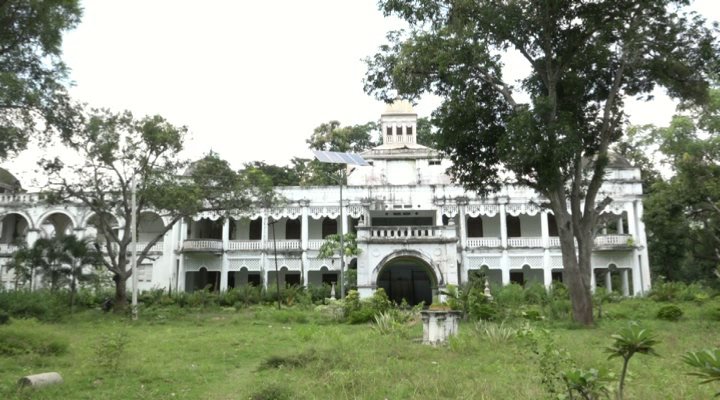Paralakhemundi: Gajapati district has a number of tourist, historic places and royal monuments. But many of them have been on the verge of vanishing into oblivion for lack of maintenance. One of them is Brundaban palace or Basant Nivas, which is a testimony to the royal glory of Paralakhemundi.
This palace, once looking magnificent for its structural design on a sprawling area, has fallen into ruins over years of neglect.
Brundaban palace, on the bank of Mahendratanaya river at Paralakhemundi, is a monument bearing royal signatures of the regime ruled by King Gourachandra Gajapati and later by his son Krushnachandra Gajapati.
The palace was developed on a patch of 17 acres of land on the river bank between 1890 and 1905, according to some researchers. An Italian architect had drawn up its design.
The royal families used to spend summer at this place, three km from the town. That’s why it is known as Basant Nivas.
The Basant Nivas was designed according to Indo-European architectural style. The place has been designed in such a way that each room of the palace remains cool inside.
The palace consists of 50 rooms, conference hall and a Rani Mahal. The king had used imported materials and fittings for the palace.
Timbers used in the palace were imported from abroad while high-quality tiles were brought from Rangoon.
Interestingly, inside the underground of the palace was a gas chamber which used to illuminate the entire palace. There is also an underground tunnel route from this place to the main palace of the king.
However, the palace could not sustain his lustre and grandeur. After the death of Ramchandra Dev, son of king Krushnachandra Gajapati, the royals deemed it to be ill-fated and abandoned it later. Since then, the maintenance and upkeep of the palace has been neglected for years.
The king had handed the palace to the state government. Despite the government’s takeover, the palace has been in sorry state and is gradually losing its identity.
After takeover, the government used the palace as a police battalion for some days and later, it was used for education purpose.
Now, the Tourism department has taken over its maintenance. Its maintenance work is underway with an aim to make accommodation for tourists. It is said that in the name of beautification, the department has restricted entry of public to the palace.
The palace walls are covered with a thick layer of moss and weeds while its doors and windows are in dilapidated condition, the report said. Beams and walls in rooms have cracked.
The turret of the palace is leaking. Open theatre, newly built, has got damaged.
However, the district information and public relations officer Prabhakar Tripathy said that the district administration has been making efforts to restore the palace to its old glory.
PNN

